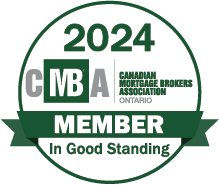Why the Future of Mortgage Lending Should Be Customer-Centric
So you have to get a mortgage. You’re already dreading it aren’t you? If you are, it would be hard to blame you. The mortgage market has never been considered user-friendly and the average consumer struggles with how opaque and cumbersome the mortgage borrowing experience can be. The antiquated industry is desperately in need of a more modern, transparent and customer-centric approach. Here’s why…

The Current Mortgage Lending Process Is Inherently Biased
Often when a first-time homebuyer looks into how to obtain a mortgage to finance their house purchase they have to start by figuring out all the terminology, legal requirements, and jargon used in the real estate industry. The average consumer is perfectly capable of understanding this information but it is generally hard to find all the necessary information in one place. So, naturally, they turn to an advisor, commonly an advisor at their financial institution or a broker who can be of assistance in filtering through all the information. But, if the information was readily available to the homebuyer would they necessarily need the advisor? Not only that, but just because you have used an advisor or a broker doesn’t mean you will get the best result. There are two key reasons for this:
- Lenders want to earn the highest interest rate they can obtain. They deal with customers they can safely determine will be good payers and need to comply with increasingly complex regulations that restrict their mortgage lending activities. While no one can argue that proper underwriting and risk management are bad practices, the lender’s incentives don’t always align with the homebuyers needs.
- Brokers are paid fees by the lenders but are required to represent the customer. This creates an inherent conflict that risks incentivizing the broker to not always act in the customer’s best interest.
Given the inherent bias of the traditional broker-borrower relationship, it’s no surprise that the modern mortgage borrower, who is better educated, has a general antipathy toward the traditional business models.
As the delivery of financial services evolves in the new FinTech ecosystem, one of the most exciting underlying aspects is the empowerment this provides the consumer. There is no need for the markets to be dominated by centralized institutions, nor tilted in favor of lenders and advisors. The move to an open banking model will empower consumers to steer their own borrowing journey and find the best financing solutions for them.
Today’s Mortgage-Seeking Customer Wants A Digital Solution
The instinct to search for financing solutions online or via mobile is growing, while the traditional methods of delivery of financial products like, branches, brokers and face-to-face meetings with advisors is in decline. 57% of Canadian Millennials expect companies to have an app and they are a significant portion of the home buyer market. In fact, according to a recent survey conducted by Royal LePage, 84% of Canadian Millennials strongly intend to invest in a home in the future, and about 68% plan to buy a home in the next five years.
The ease of use, personalization and flexibility that can be provided by Fintech cannot be matched by traditional financial institutions. As fintechs innovate and spearhead the digital transformation of banking, the customer will be front and centre as the focus. While Canada has lagged some other markets, the next five years will see tremendous transformation in the Canadian consumer finance markets, leading to a future where customers will form strong bonds with the financial apps that deliver real value.

At Frank, we’re excited to be a leader in delivering open, transparent mortgage financing solutions that put the customers in control of their personal financing process while empowering them to make their own, well-informed decisions.
About The Author

Don Scott
Don Scott is the founder of a challenger mortgage brokerage that is focused on improving access to mortgages. We can eliminate traditional biases and market restrictions through the use of technology to deliver a mortgage experience focused on the customer. Frankly, getting a mortgage doesn't have to be stressful.
Related Posts






